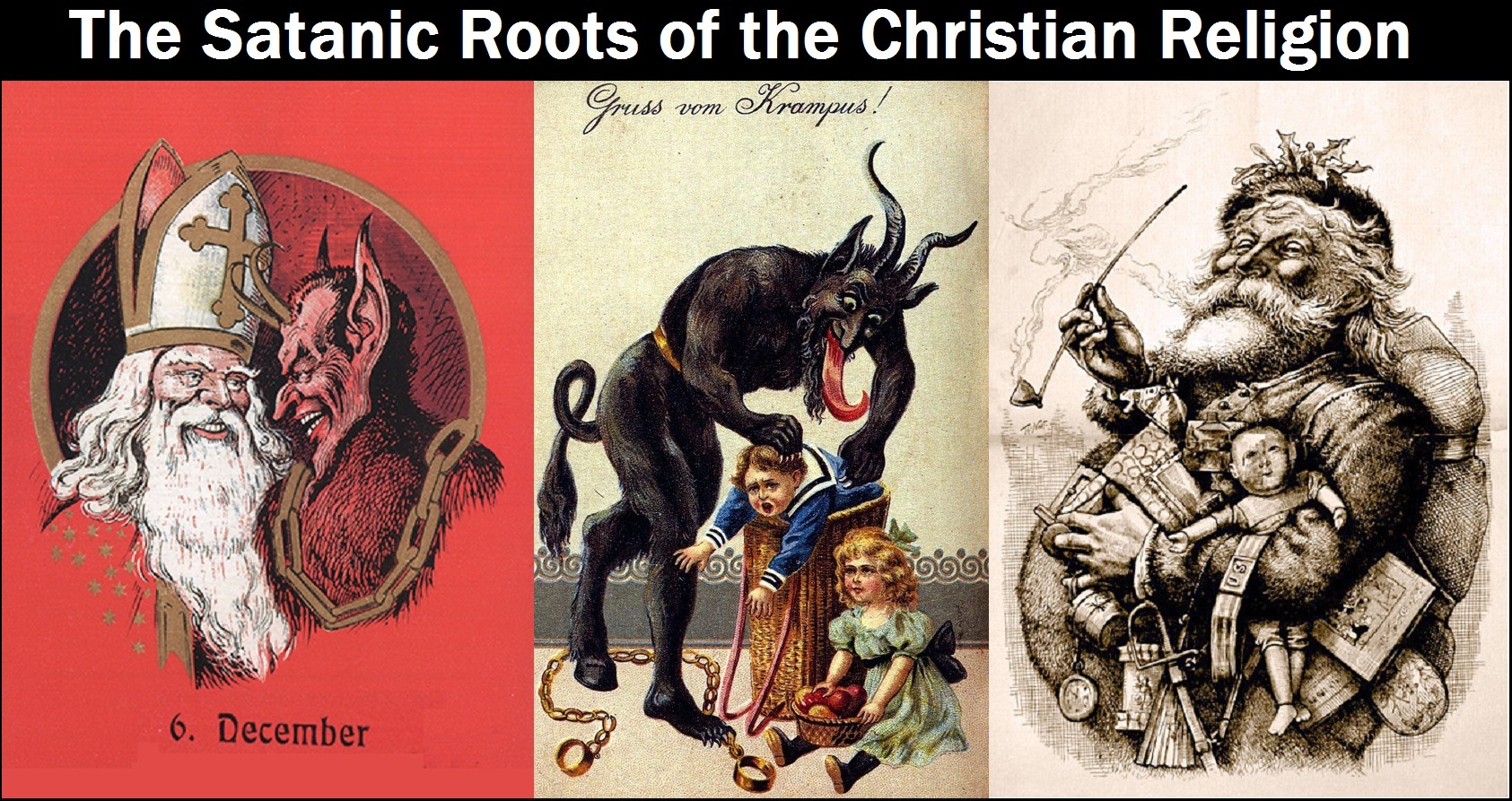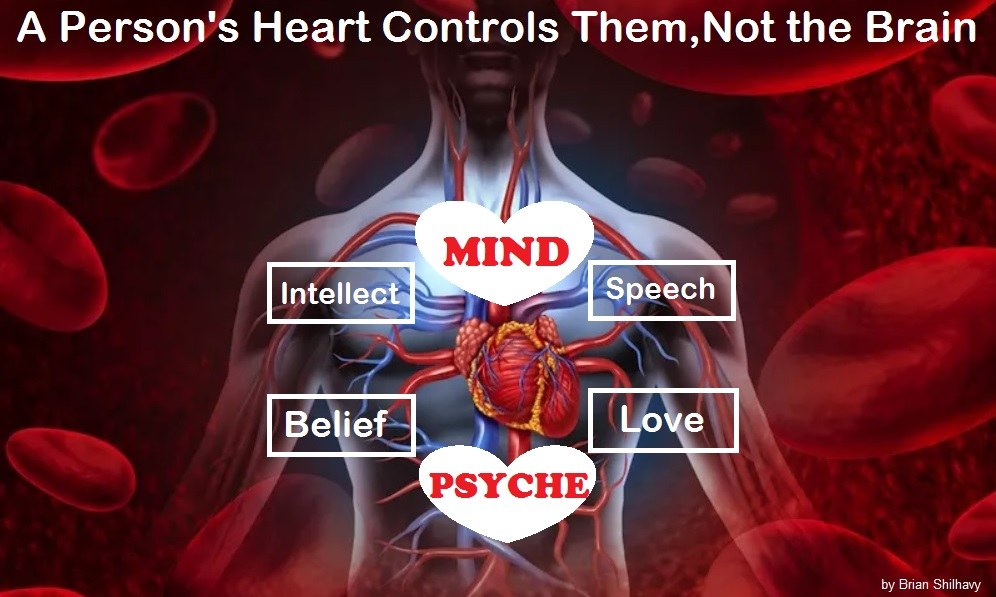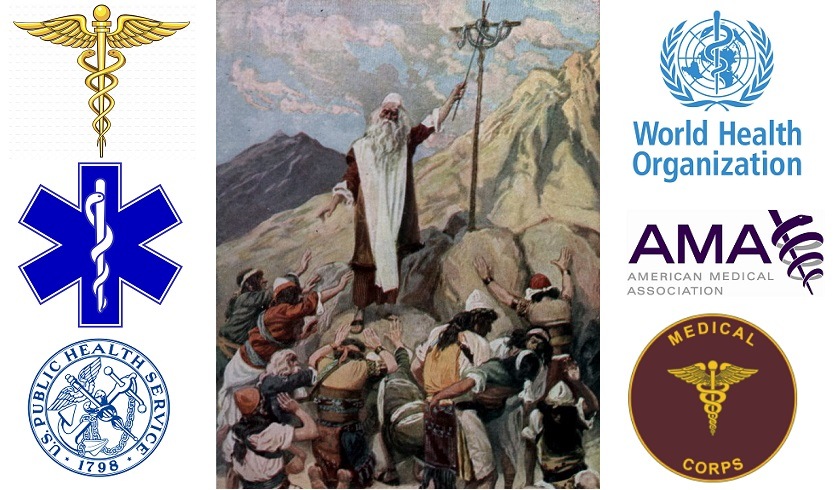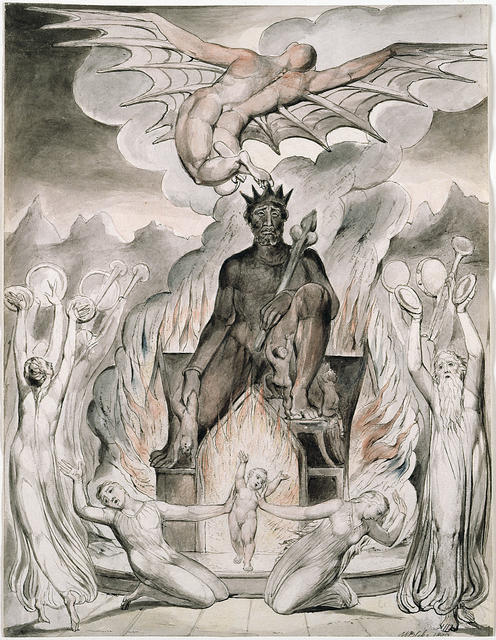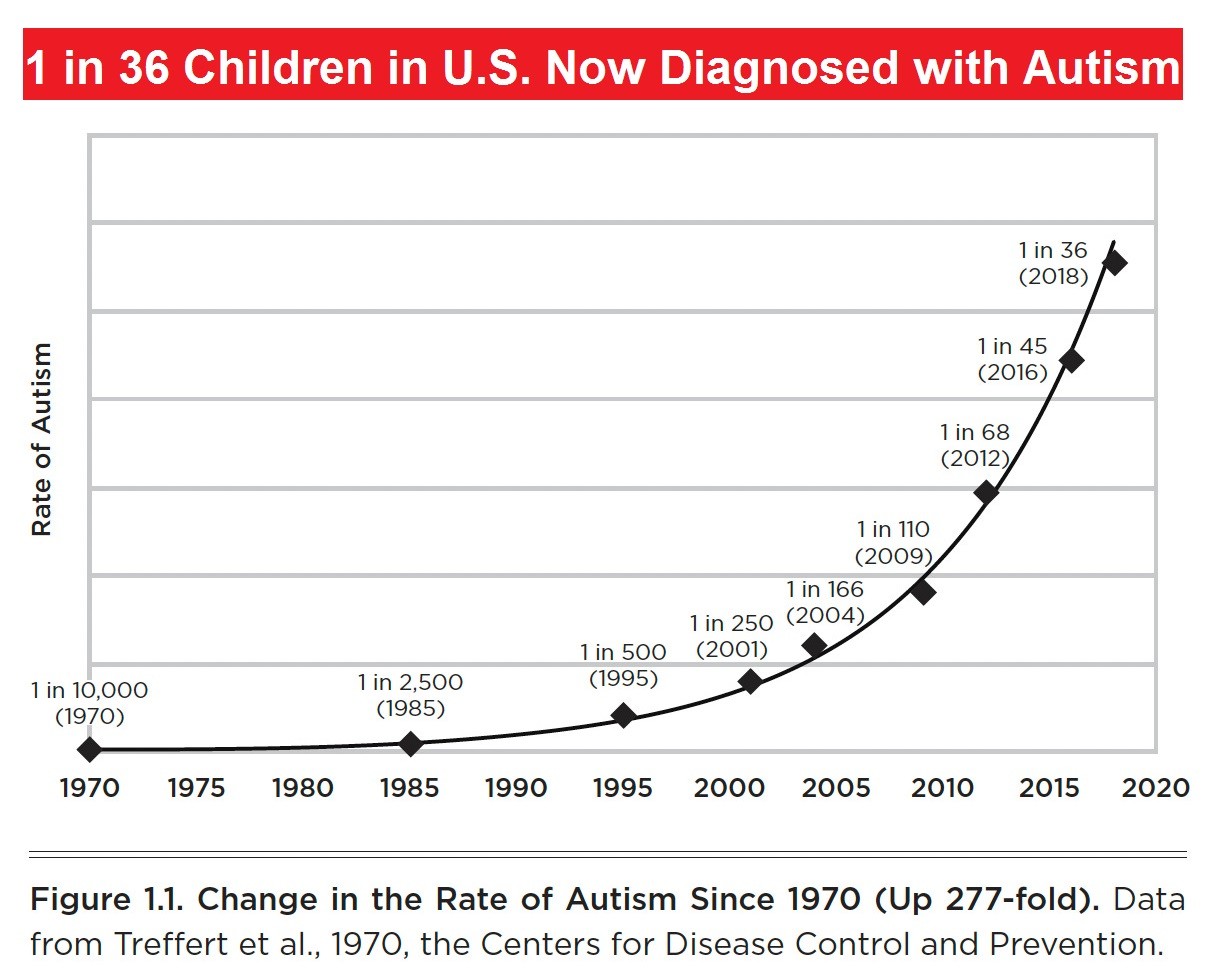
Comments by Brian Shilhavy
Editor, Health Impact News
The CDC came out with a new autism report this week, and I am going to republish (a portion of) a very comprehensive analysis written by J.B. Handley, who is one of the world’s most knowledgeable experts on this topic.
But before reading this excellent report, watch this short clip from The Doctors show which is now over 13 years old, as he completely destroys the notion that vaccines don’t cause autism.
I can’t believe this is still available on YouTube. If it ever disappears, let us know and we will put a copy up on our video channels.
New CDC Study: Autism rate up 243% since 2000
by J.B. Handley
Excerpts:
A brand new study was released today by Centers for Disease Control pegging the autism rate in the United States at 1 in 44 children, up from 1 in 150 children in 2000 when their complex surveillance system—The Autism and Developmental Disabilities Monitoring (ADDM) Network—was first instituted.
Looked at another way, that means 2.7% of children today have autism, and the rate has grown by 243% since 2000.
In the old days, people panicked when they saw a devastating disability amongst our children increase by 243%. But, the CDC isn’t worried, their “Public Health Action” from the study is unfortunately par for the course:
The continued increase among children identified with ASD, particularly among non-White children and girls, highlights the need for enhanced infrastructure to provide equitable diagnostic, treatment, and support services for all children with ASD.
Any question in the report about WHY the rate has increased so much? Of course not. But, it actually gets worse. Like clockwork, the denialists have been working overtime to assure us all that these new numbers are absolutely, positively nothing to worry about. Just look at this reassuring headline from two “experts” today in STAT News.
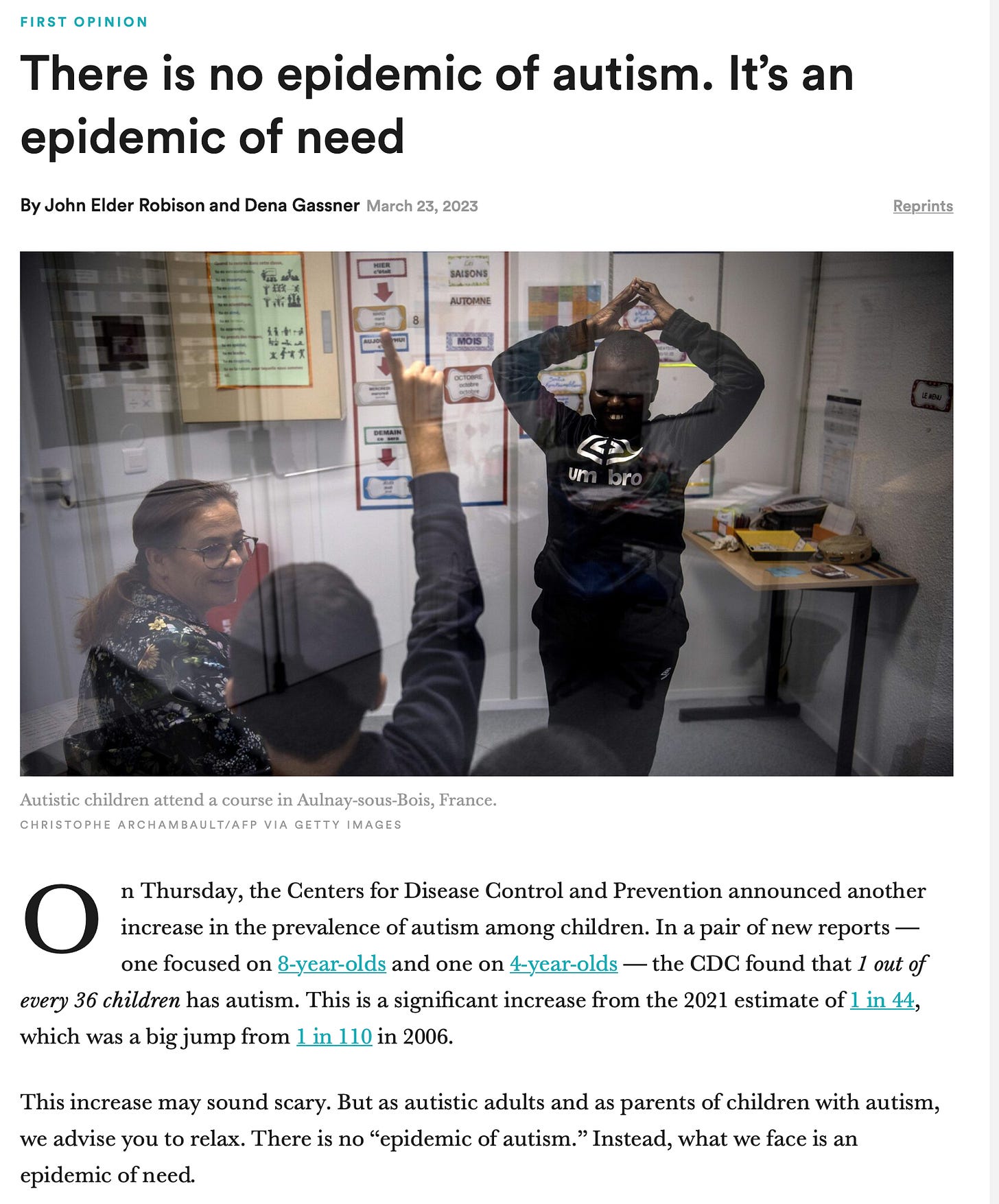
The authors write:
This increase may sound scary. But as autistic adults and as parents of children with autism, we advise you to relax. There is no “epidemic of autism.” Instead, what we face is an epidemic of need. The main reason we are finding more autism is simple: Clinicians are getting better at spotting what was always there. There is no simple test for autism, so diagnosing it requires substantial training in observational techniques. As a result, diagnosis can vary significantly depending on the population and the competence of clinicians.
Why are people whitewashing such an obvious truth?
In 2015 Steven Silberman published NeuroTribes: The Legacy of Autism and the Future of Neurodiversity.[2]
Silberman, a former record producer, restaurant critic, and teaching assistant to the poet Allen Ginsberg, created a stir in the autism world and brought the tortured idea that autism has always been with us at exactly the same rate back into the public debate.
He described a world in which autism is a “naturally occurring form of cognitive difference akin to certain forms of genius.”
The geeks of Silicon Valley? Nikola Tesla? All “blessed” with autism.
“Whatever autism is, it is not a unique product of modern civilization. It is a strange gift from our deep past passed down through millions of years of evolution,” Mr. Silberman writes, attempting to erase an epidemic with the stroke of a pen.
The term neurodiversity first appeared in the late 1990s, coined by sociologist Judy Singer. She likened acceptance of diverse ways of thinking to other social acceptance movements taking shape and hoped “to do for neurologically different people what feminism and gay rights had done for their constituencies.”[3]
On the surface this appears to be a noble pursuit—what could possibly be wrong with advocating for acceptance?
In Wired magazine, Mr. Silberman examined the social revolution he believed was taking shape, as advocates with autism and “others who think differently are raising the rainbow banner of neurodiversity to encourage society to appreciate and celebrate cognitive differences, while demanding reasonable accommodations in schools, housing, and the workplace.”[4]
Mr. Silberman’s message met the needs of the media’s social agenda to make autism normal and resonated both in elite circles and with vaccine injury deniers.
Featured in many prominent publications (Forbes, the Washington Post, the New York Times, The Economist, and the New Yorker, to name a few[OU1] ), Silberman won the Samuel Johnson Prize for nonfiction in 2015.
A glowing review in The Atlantic praised Mr. Silberman’s book and noted that autism self-advocates “make space for anyone who feels not quite normal.”[5]
Mr. Silberman took it a step further, pinning the survival of our species on our ability to accept neurological diversity, explaining that
“the value of biological diversity is resilience: the ability to withstand shifting conditions and resist attacks from predators. In a world changing faster than ever, honoring and nurturing neurodiversity is civilization’s best chance to thrive in an uncertain future.”[6]
I’m fifty-three years old, and as a child I’d never seen or heard of even one peer with autism. Ask any teacher, doctor, nurse, or coach who has been working for three decades or more and you’ll always hear the same thing: something new and very different is happening with children today.
My teenage children know dozens of kids with autism, and schools are bursting at the seams with special education classes. When you look at a graph of the change in the rate of autism over time, it’s breathtaking (see figure 1.1).
When I first heard that there were researchers, spokespeople, and experts claiming that the growth in the number of kids with autism was all a big mirage and that these children had always been here, I really couldn’t take it seriously.
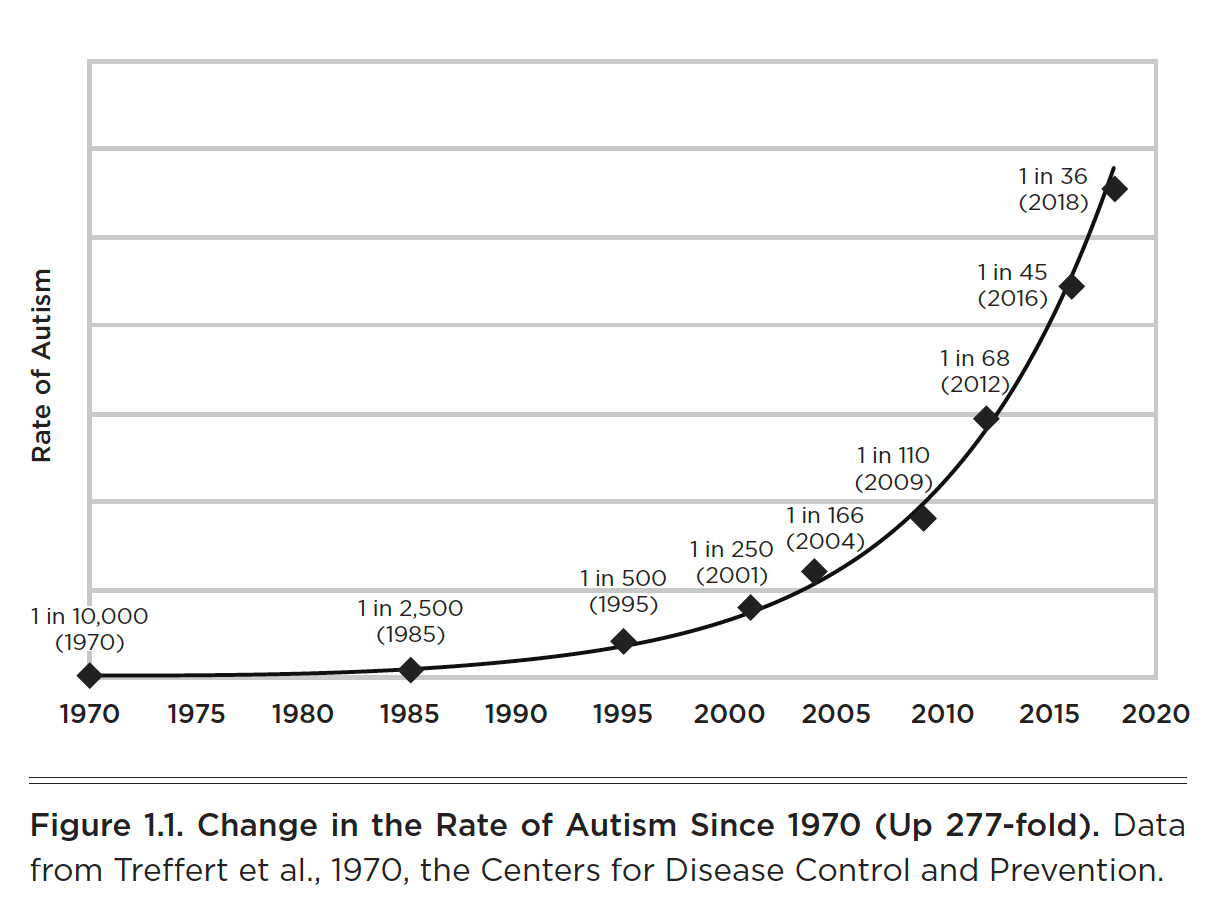
Figure 1.1. Change in the Rate of Autism Since 1970 (Up 277-fold) (Data from Treffert et al., 1970, the Centers for Disease Control and Prevention)
A simple question refutes this narrative: “Where are all the adults with autism?”
If Mr. Silberman’s version of history is plausible, you’d need roughly 2 percent of American adults to be exhibiting clear signs of autism.
Let’s do the quick math: Fifty-four percent of the US population is over the age of thirty-five. That’s roughly 174 million people.
If one in thirty-six of those adults had autism, that’s 4.8 million American adults with autism—4.8 million adults over the age of thirty-five who have a disabling condition that makes independent living a challenge for all but the mildest of cases.
There is no data anywhere that supports an adult autism number anywhere close to 4.8 million.
To accommodate that many individuals, you’d have nursing homes, group homes, and mental institutions overrun with adults with autism.
The best data I could find about housing for adults with disabilities was in Canada, where a federal health system makes data more trackable.
In Canada’s largest province, Ontario, there are 13.6 million people. Adults over thirty-five make up 7.34 million people, which at a rate of one in thirty-six would mean 204,000 adults with autism.
And how many group home spaces does Ontario offer for adults with all forms of developmental disabilities? Eighteen thousand.[8]
Keep in mind, autism is only one form of developmental disability and represents well under half of all cases. Ontario doesn’t have more beds, because they don’t need more beds (yet) —there are nowhere near that many adults with autism.
In fact, forty-two thousand adults are being serviced in Ontario for all disabilities, and if the rough math says that if autism is half that number, there are 90 percent of the adults with autism in Mr. Silberman’s world “missing” from Ontario (twenty thousand actually there versus two hundred thousand).
Because they don’t exist.
The Epidemic Denial Food Chain
Sitting atop the epidemic denial food chain is one man—Dr. Paul Offit.
On the surface there’s no reason Dr. Offit should have much of an opinion about autism, or ever be quoted about autism by the mainstream press, given that his area of expertise is . . . vaccines.
Dr. Offit is a professor of “Vaccinology” at the Children’s Hospital of Philadelphia and personally made tens of millions of dollars when one of his inventions—a rotavirus vaccine—was accepted onto the US recommended vaccine schedule.[25]
Dr. Offit has no formal training in anything to do with autism, but that hasn’t kept him from writing books about autism (Autism’s False Prophets: Bad Science, Risky Medicine, and the Search for a Cure), and he’s often quoted in the media discussing autism.
In 2010 the Age of Autism blog voted Dr. Offit “Denialist of the Decade” for the 2000s.[26]
Here’s a typical quote from Dr. Offit about autism’s rate:
It’s not an actual epidemic. In the mid-1990s, the definition of autism was broadened to what is now called autism spectrum disorder. Much milder parts of the spectrum—problems with speech, social interaction—were brought into the spectrum.
We also have more awareness, so we see it more often. And there is a financial impetus to include children in the wider definition so that their treatment will be covered by insurance. People say if you took the current criteria and went back 50 years, you’d see about as many children with autism then.[27]
In Dr. Offit’s world there is no problem here. Things are as they always were; we just understand it better.
And if there’s no epidemic, there is no environmental trigger, because why have a trigger if something hasn’t actually grown?
Said differently: Denying the autism epidemic is to deny the suffering of millions of children and their families and also to deny the exploration into the true cause so the epidemic might end.
But what is Dr. Offit’s real motivation?
In my opinion, the autism epidemic is the single biggest threat to the vaccine program in its current form.
If vaccinations are triggering autism in one in thirty-six children, the risk-reward equation for the vaccine program is destroyed.
On the other hand, if autism has always been with us, vaccines couldn’t possibly be playing a role.
Read the full article, along with the references, at J.B. Handley Blog.
About the author: J.B. Handley is an autism dad, a graduate of Stanford, the author of How to End the Autism Epidemic, and the co-author of Underestimated: An Autism Miracle. He lives in Portland, Oregon with his wife and three children.
Comment on this article at HealthImpactNews.com.
This article was written by Human Superior Intelligence (HSI)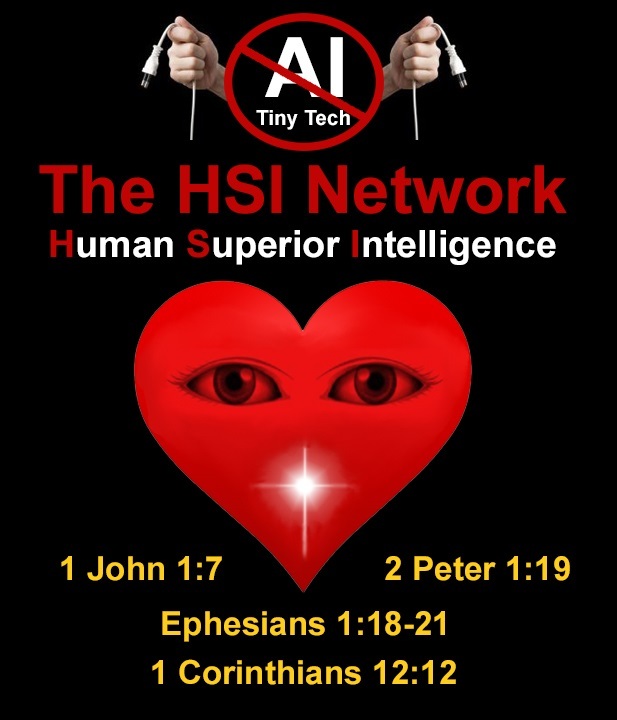
See Also:
Understand the Times We are Currently Living Through
The Demonic Roots of Christianity: The Christians Jesus Said He Hated
Who are God’s “Chosen People”?
Life in the Spirit versus the Religious Life in the Flesh
KABBALAH: The Anti-Christ Religion of Satan that Controls the World Today
Christian Teaching on Sex and Marriage vs. The Actual Biblical Teaching
Exposing the Christian Zionism Cult
The Bewitching of America with the Evil Eye and the Mark of the Beast
Jesus Christ’s Opposition to the Jewish State: Lessons for Today
Identifying the Luciferian Globalists Implementing the New World Order – Who are the “Jews”?
The Brain Myth: Your Intellect and Thoughts Originate in Your Heart, Not Your Brain
The Seal and Mark of God is Far More Important than the “Mark of the Beast” – Are You Prepared for What’s Coming?
The Satanic Roots to Modern Medicine – The Image of the Beast?
Medicine: Idolatry in the Twenty First Century – 10-Year-Old Article More Relevant Today than the Day it was Written
Having problems receiving our emails? See:
How to Beat Internet Censorship and Create Your Own Newsfeed
We Are Now on Telegram. Video channels at Bitchute, and Odysee.
If our website is seized and shut down, find us on Telegram, as well as Bitchute and Odysee for further instructions about where to find us.
If you use the TOR Onion browser, here are the links and corresponding URLs to use in the TOR browser to find us on the Dark Web: Health Impact News, Vaccine Impact, Medical Kidnap, Created4Health, CoconutOil.com.





